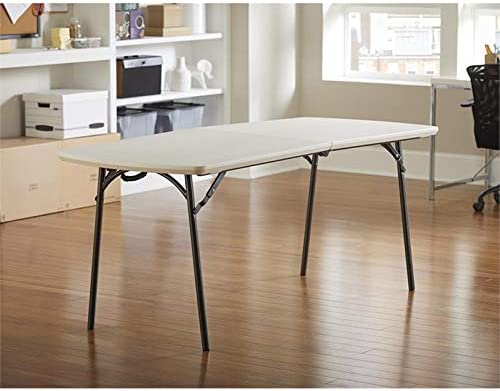Balancing Space Folding Tables And Guest Comfort

We’re talking about comfortable spacing today, not about standing in a queue and potentially breathing down someone’s neck. A badly laid out function or conference could have people breathing over your shoulder and tripping into your lap.
We know space is at a premium in any property so let’s look at the minimum distance you need to leave between your foldable tables, chairs, walls and aisles.
Spacing Guidelines For Rectangular Folding Tables
If you do not need to have service aisles for waitrons, entertainers or tutors to move up and down to interact with attendees then the aisle can be kept at a minimum. The measurements you will need for mapping out your layout are:
- 1.3 metres from table edge to table edge (T-to-T) (long sides).
- 50 centimetres of space should be allowed for a chair pulled away (chair space) from a table for someone to stand up.
- 45 centimetres of space should be the absolute minimum left between chairs (aisle space), measured from the back of one chair to the back of the chair at the next table. Large people will battle with this space so allow for 60 centimetres or seat them at the head of the table arrangement. Wheelchair users will need a minimum of 70 centimetres to get between the chairs.
Spacing Guidelines For Rectangle Tables Plus A Service Aisle
If you need waitrons, entertainers or tutors to move up and down to interact with attendees then the aisle can be expanded. The measurements you will need for mapping out your layout are:
- 1.7 metres T-to-T (50 centimetres x 2 chairs + 70 centimetres for the aisle)
- 50 centimetres chair space
- 70 centimetres aisle space
Diagonal Space Planning For Dining With Square Tables
A space-saving layout, for intimate dining events, is to use square tables placed diagonally to each other i.e. “diamond” shaped.
Leave 60 centimetres from corner to corner of each ‘diamond’ table. Leave 70 centimetres for wheelchair access.
Space Planning Between Walls And Chairs At Rectangular Tables
A minimum of 1.2 metres should be left between a wall and the table edges for those attendees seated parallel to any walls. This allows for 50 centimetres for a pulled-out chair and 70 centimetres of walking space. The walking space is larger than the above-mentioned aisles because more shoulder space is required. When walking between chairs and tables, your shoulder space is automatically accommodated above people's heads.
Spacing Guidelines For Round Tables
When planning an event with round tables, you will need:
- 1.5 metres T-to-T.
- 50 cm chair space
- The same 45, 60 and 70 cm aisle space guidelines apply as per rectangular tables.
Planning Rectangular & Round Tables
If you need a combination of rectangular and round tables at a function, to meet client needs or to just break up the rigidity of one style or size of table, then place the round tables in the corners of the room.
This will maximise the space utilisation of the room.
One last note: elbow room. There’s nothing worse for guests than to be conscious about elbowing their table neighbour or having to eat
with arms tucked in like a penguin. 15 cm chair to chair (+45 cm space per person) will be a space-saving arrangement and 20 cm chair to
chair (+55 cm space per person) will be a more generous arrangement.
Get your ideal foldable table today! Trolleys are also available for moving your folding table nz with ease.

